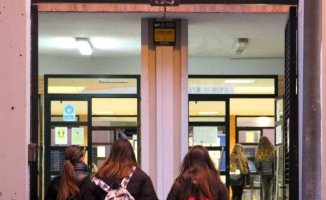After all, the Trojan horse was not in the mythological city of Asia Minor, three hundred kilometers south of what is now Istanbul. He has been all this time on the campus of the Southern California University (USC) in Los Angeles, and neither Homer nor anyone had found out.
The Trojans are USC's sports teams (football being the most important) at USC, and the Trojan horse is not some great wooden contraption that the naive inhabitants of the fortified metropolis introduced within its walls as a symbol of victory without imagine that inside was full of enemy soldiers. The enemy in this odyssey was the Big10Conference, which has sneaked into the territory of the Pac 12 at night and treachery when it was not expected, and has kidnapped its two most mediatic entities, as if they were the beautiful Helena, daughter of Zeus and seduced by Paris, which caused the war.
Parenthesis for the uninitiated, because the world of sports in the United States may sound more unintelligible than Ulysses, not the Greek one but James Joyce's: the universities are grouped in conferences, which are like leagues, which impose their rules and negotiate the television rights, except for the Catholic Notre Dame, from Indiana, which is independent and freelance; the most powerful, called the power five, are the SEC (Southeastern Conference), Big 10, Big 12, Pac 12 and ACC (Atlantic Coast Conference); Universities of great academic prestige such as Harvard, Columbia, Yale and Princeton are part of the Ivy League, which would be in the equivalent of a second division.
With the parenthesis closed, North American university sports are going through a revolution with money, of course, involved, but also the issue of the rights and safety of the players, what their conditions must be, the requirements to transfer their curriculum and pack their bags, how they should be compensated… Mergers, acquisitions and consolidations are the order of the day, as if it were the world of finance. The SEC (whose initials, by the way, are the same as those of the Securities and Exchange Commission, which regulates Wall Street and punishes, among other things, the use of privileged information) has signed two heavyweights like Texas and Oklahoma, and the Big 10, another almost as heavyweight, has done the same with USC and UCLA, both from Los Angeles, who played in the Pac12, the big loser in this story.
The heart of the matter is the negotiation of television rights with ESPN and the large networks in the country. The more competitive and better the games, the more money conferences can ask for, and both the SEC and the Big 10 are in the process of becoming sixteen-team leagues or championships. The Pac 12, whose origins date back more than a century, has been left without its two most competitive universities (the Trojans in American football and the Grizzly Bears or Bruins in basketball, from which NBA stars, among others, have emerged like Kareem Abdul-Jabbar, Bill Walton, Russell Westbrook, Jamaal Wilkes and Jrue Holiday, and NFL legends like OJ Simpson, Lynn Swann, Junior Seau, Anthony Muñoz and coach Pete Carroll, their hole is hard to fill. San Diego State and Boise State.
In mythology, the Achaean soldiers came out in the gloom from the wooden horse, killed the sentinels and opened the city gates for their army to enter. And so Troy fell. In America's college sports odyssey, the end is yet to be written. But for some it looks better than for others.













